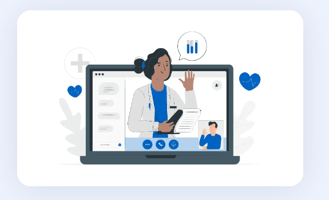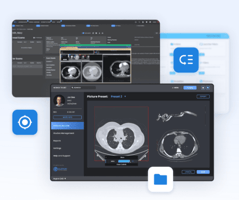If you're venturing into the world of healthcare informatics, you've likely encountered the term...
Powering Healthcare Connectivity: The Role of HL7 Integration Engines
In the ever-evolving landscape of healthcare, efficient data exchange is not a luxury but a necessity. Health Level Seven (HL7) integration engines have emerged as vital tools in healthcare IT, driving interoperability and connectivity among disparate systems. In this article, we delve into the significance, capabilities, and impact of HL7 integration engines in the modern healthcare ecosystem.
The Imperative for Seamless Data Exchange in Healthcare
Healthcare delivery involves a multitude of systems and applications, each generating and managing critical patient data. Electronic Health Records (EHRs), laboratory information systems, radiology departments, and billing systems all play a crucial role. However, these systems often speak different data "languages" and operate in isolation, creating data silos that hinder efficient information flow.
Understanding HL7 Integration Engines
HL7 is a set of international standards designed to facilitate the exchange, integration, sharing, and retrieval of electronic health information. HL7 integration engines serve as the backbone of healthcare IT, ensuring that data flows seamlessly between these disparate systems. These engines act as the translators, transforming data from one format into another, making it universally understandable and usable.
Key Functions and Capabilities of HL7 Integration Engines
-
Data Transformation: HL7 integration engines excel at transforming data from one format to another. This critical function ensures that data can be accurately interpreted by the receiving system, regardless of its native format.
-
Data Routing: These engines automate the routing of data to the appropriate destinations. For instance, patient lab results can be automatically sent to their electronic health records (EHRs), eliminating manual data entry and reducing the risk of errors.
-
Data Mapping: HL7 integration engines map data elements from one system to another, ensuring that all relevant information is captured and conveyed accurately.
-
Real-time Data Exchange: Many modern HL7 integration engines support real-time data exchange, allowing healthcare providers to access the most current patient information during clinical encounters.
Impact and Benefits of HL7 Integration Engines
-
Enhanced Patient Care: HL7 integration engines ensure that healthcare providers have access to comprehensive and up-to-date patient information, leading to improved patient care and safety.
-
Streamlined Workflows: Automation of data exchange processes reduces administrative overhead, allowing healthcare professionals to dedicate more time to patient care.
-
Cost Savings: Eliminating manual data entry and reducing data errors translate into cost savings for healthcare organizations in terms of time, resources, and potential legal ramifications.
-
Data Accuracy: These engines enhance data accuracy, minimizing the risk of medical errors due to incorrect or incomplete information.
Challenges and Considerations
While HL7 integration engines offer substantial benefits, healthcare organizations must address challenges, including interoperability with various standards, data security, compliance with regulations such as HIPAA, and resource allocation for implementation and maintenance.
In Conclusion
HL7 integration engines are the unsung heroes of modern healthcare, enabling interoperability and connectivity in an increasingly complex and data-driven environment. As healthcare continues to advance, the role of HL7 integration engines remains pivotal, ensuring that healthcare organizations can provide efficient, patient-centric care by harnessing the full potential of their data. Embracing these engines guarantees a future where healthcare delivery is seamless, efficient, and data-driven, benefiting both patients and providers.


